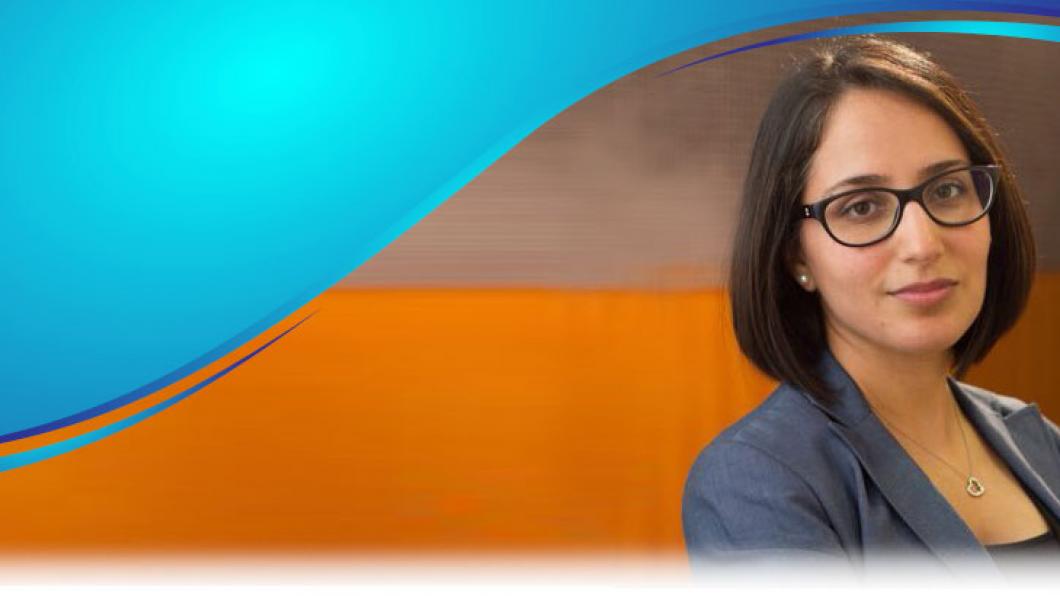
Technology’s potential to improve the lives of kids with autism
As Ontario Premier Kathleen Wynne spoke to 14-year-old Liam Cosgrove at Holland Bloorview during her tour in February, Dr. Azadeh Kushki held her breath.
As the Premier chatted with Liam, who has autism, he showed her the Anxiety Meter – a technology being developed at Holland Bloorview by Dr. Azadeh Kushki, a scientist at the Bloorview Research Institute.
The Anxiety Meter is a digital tool used with an iPad or tablet that can detect anxiety levels by monitoring a child’s heart rate.
“When you get anxious your heart rate changes significantly,” said Dr. Kushki, noting that most children with autism experience significant anxiety that can negatively impact physical and mental health.
Colour coded
To use the Anxiety Meter, a child wears wireless sensors – small stickers that monitor the heart rate and the Anxiety Meter translates this into a visual display on a tablet through a colour gradient.
There is an indicator bar that does up and down the gradient – if the bar is in the green zone, you’re calm. If it moves up into the red zone, you’re anxious.
Once a child reaches an anxious state, he or she can begin managing that anxiety through trained responses, such as deep breathing exercises.
But as Liam spoke to the Premier, it was Dr. Kushki who was feeling anxious. The bar remained in the green area, which surprised her.
Surely a 14-year-old having a discussion with the Ontario Premier in front of flashing cameras would cause a little anxiety, wouldn’t it?
Nope, Liam was calm, cool, and collected and his Anxiety Meter reflected that.
“I remember thinking, ‘This isn’t working!’” said Dr. Kushki.
Change of subject, change of mood
The topic of conversation then turned to situations that made Liam nervous. He admitted that seeing a new teacher at school that he’s never met makes him a little uneasy.
Suddenly the bar began moving closer and closer to the red zone. Liam also admitted elevators make him nervous, and the bar moved even further.
“It was an amazing moment because as the bar went UP, Liam started his deep breathing techniques,” said Dr. Kushki.
Encouraged by this real-life demonstration, Dr. Kushki and her team continue to develop the Anxiety Meter and are just about finished their clinical testing and ready to make it available to the public.
(Dr. Kushki and her team are also developing a wristwatch version that doesn’t require any sensors.)
Technology’s terrific potential
Dr. Kushki believes that technology like this could have a huge impact on the treatment of autism.
She doesn’t think it will ever replace face-to-face therapy, but it could be a very powerful complimentary tool. She also believes kids and adults with autism often show an affinity towards technology.
But why?
“One of the reasons is that technology provides a predictable setting for interaction,” she said.
For many kids with autism, unfamiliar spontaneous social interaction triggers anxiety.
Technology such as apps offer a controlled way of interacting with specific outcomes. That structure might put them at ease. Plus, technology can be adjusted to better suit each child.
“It’s like when you play a video game,” said Dr. Kushki. “You start at option one, two, or three and you can choose the option that’s best for you,” she said. "Whereas when you’re in social situations, you don’t have that option.”
Special glasses for social interaction
That concept of responding positively to controlled interaction is what’s driving the development of another piece of technology at Holland Bloorview called Holli.
It’s designed to help children with autism to interact socially.
Holli uses the Google Glass, which looks like ordinary glasses, to coach children during social interactions. Holli uses the Glass microphone to listen to voices and the tiny Glass optical display to give a user appropriate answers – taking the guesswork out of conversations.
For example, the interaction being tested now is a conversation one might have when ordering at a restaurant.
A server might ask, “What would you like?”
The Google Glasses would then show options on the display like, “I would like a hamburger” or “I would like a sandwich.”
While still early in the development phase, Dr. Kushki can see this technology being used for a variety of social situations, like going to a library or going to a store.
With devices like the Anxiety Meter and Holli, it’s no wonder Dr. Kushki is so excited about the future, and specifically, about technology’s potential to improve the lives of kids with autism.